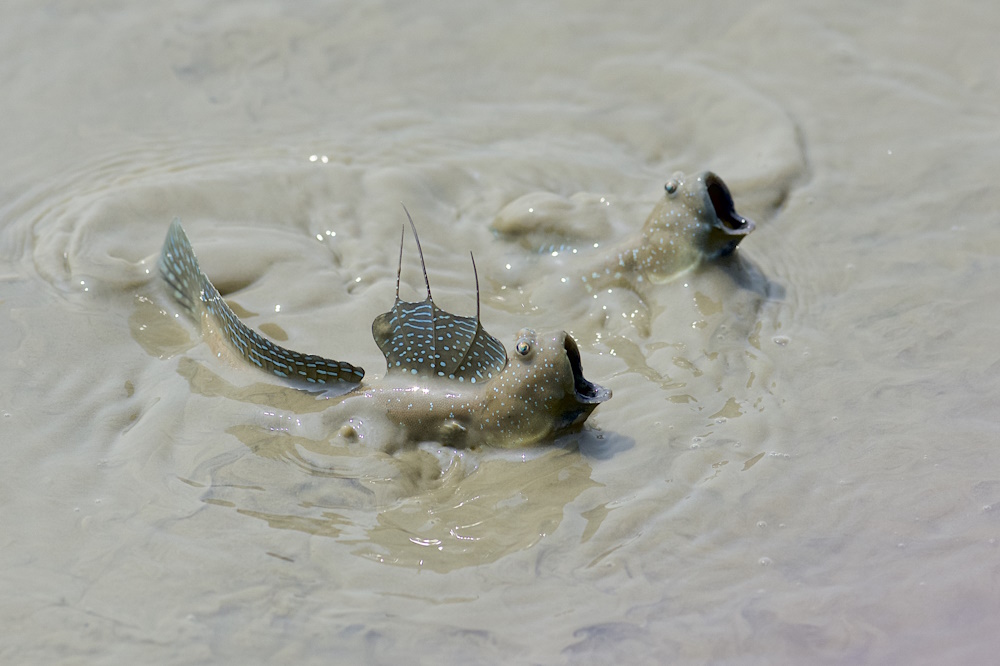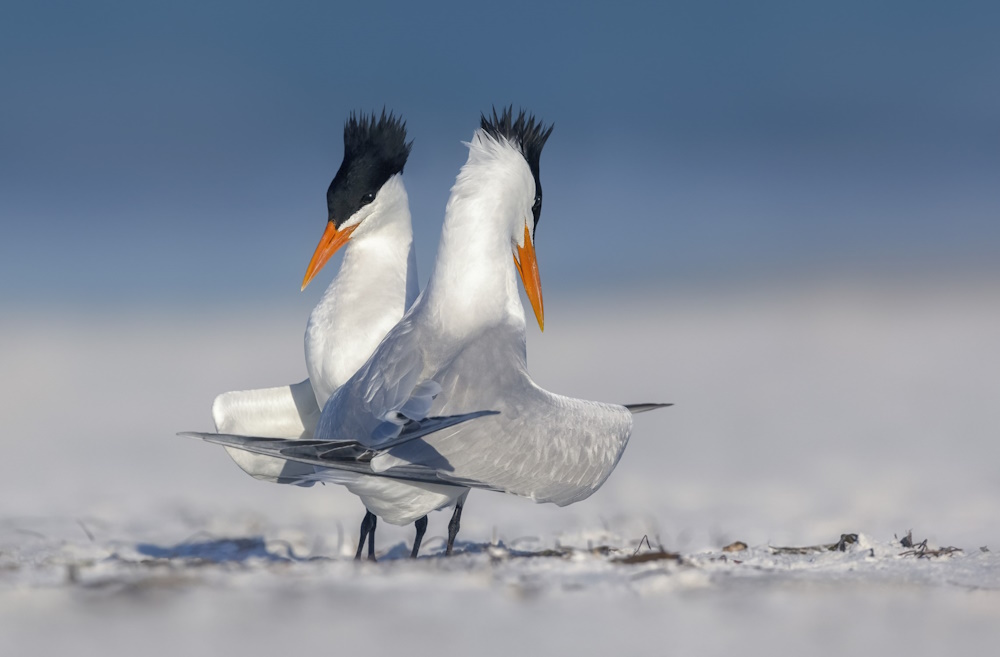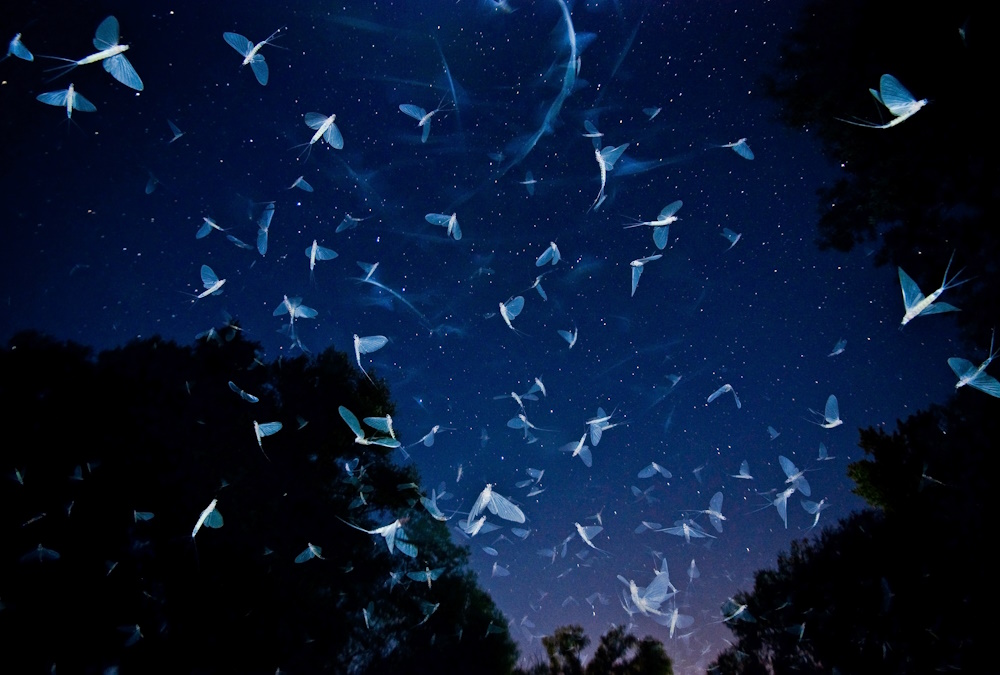Behaviour 2017
Shortlisted entries in the Behaviour category from the 2017 Royal Society Publishing Photography Competition.
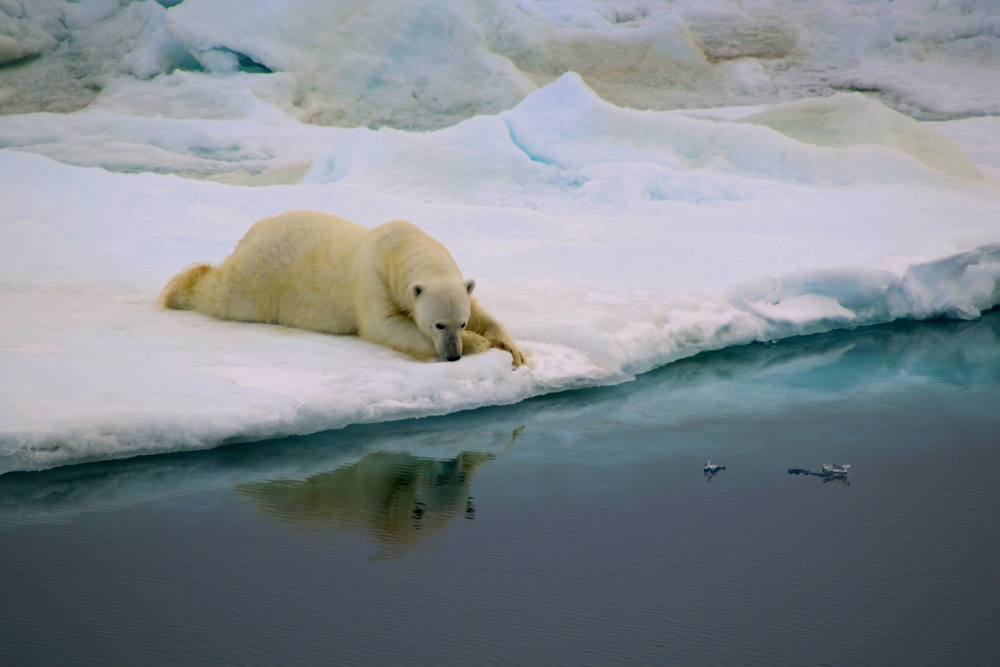
Category winner "Respiro." by Antonia Doncila. This photograph was taken while crossing the Fram Strait to recover and redeploy mooring equipment near the eastern Greenland coast. Since the Arctic Ocean is warming at double the rate compared with the rest of the globe, it was painful yet unsurprising for us to see that at 80°N sea-ice was sparse. On our journey, we saw polar bears swimming in an ocean of open water with no shadow of sea-ice for them to rest their heavy bodies on. Those polar bears were doomed to die from overheating while swimming hopeless in any direction. The protagonist of this photograph has been lucky. He found a portion of fast ice which rapidly became his home. His gaze into the water represents the product of our societal wrongdoings. It is also a symbol of hope because what has melted can become frozen again. Canon EOS 5D Mark II + Tamron telephoto lens (70-300mm, f5.6); Picture's contrast was slightly adjusted in Picasa Photo Editor.
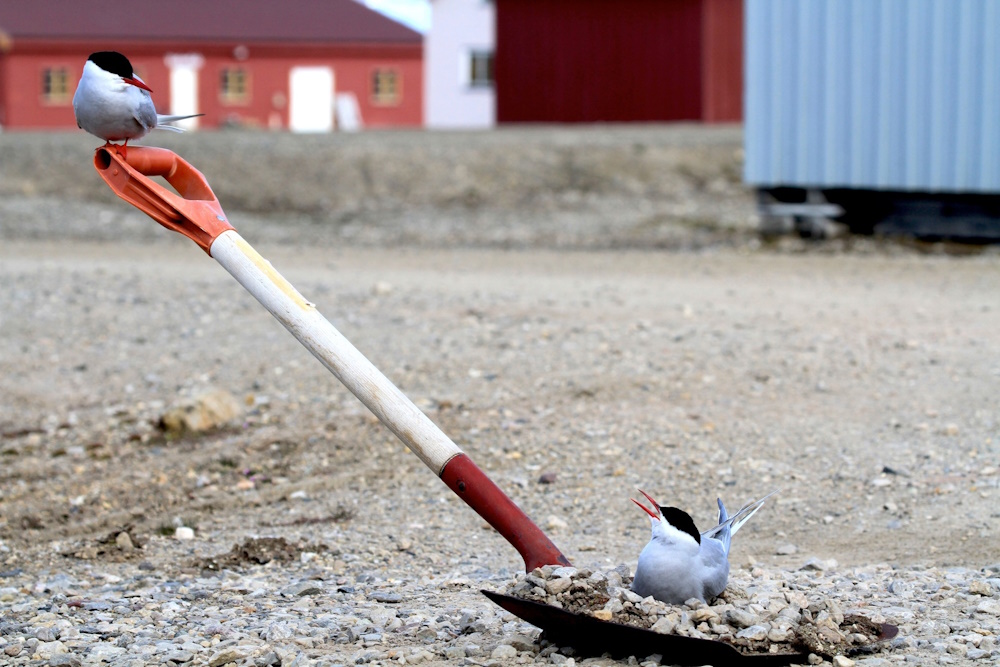
Runner up "Breeding." by David Costantini. Arctic terns (Sterna paradisaea) mate for life. They breed on the ground, and males and females share incubation duties. While on a research trip to Svalbard, I came across this couple of Arctic terns that found a clever solution to solve the difficult task of finding a good place to breed in human-modified landscapes: they made their own house on an abandoned shovel. This photo also shows how vocal communication between mates is very important in terns to coordinate parental efforts in order to achieve a successful reproduction. Minor modifications were done in terms of sharpness and saturation.

Honourable mention "Toss the scorpion - Indian roller playing with the kill." by Susmita Datta. It was an early morning safari drive at Tadoba Andhari Tiger Reserve, India. When everyone was busy tracking the tiger movement, this little moment happened on a tree branch, giving me the chance to shoot the sequence. Though light was poor (that was dealt with, in the processing part), it was still great to witness the natural history moment of survival between the prey and its predator. This Indian roller is establishing its superiority and showing off the kill (a scorpion) before finishing it off by thrashing it against the tree branches. The shot was taken at Tadoba, India. Canon 60D, Lens–Sigma 150-500.

Shortlisted "A watery escape." by Lindsey Swierk. The water anole, Anolis aquaticus, is one of only a few species of lizard that seeks refuge from predators underwater. This photo was captured after a short chase by a human "predator", who was intent on capturing spectrophotometric readings of the anole's skin for a study on rapid colour change, induced the photo's subject to flee to a safer venue in the river. Instead of finding solitude, this water anole found an underwater camera; I captured an image as the anole exhaled a single bubble of air. Water anoles live alongside small rivers and streams in Costa Rica and Panama and regularly opt for aquatic escape routes, during which they can remain underwater for over 10 minutes. These tiny divers are at risk, as their forest homes are increasingly threatened by deforestation. Olympus TG-4 16 MP Waterproof Digital Camera. The photo was not post-processed in any way.
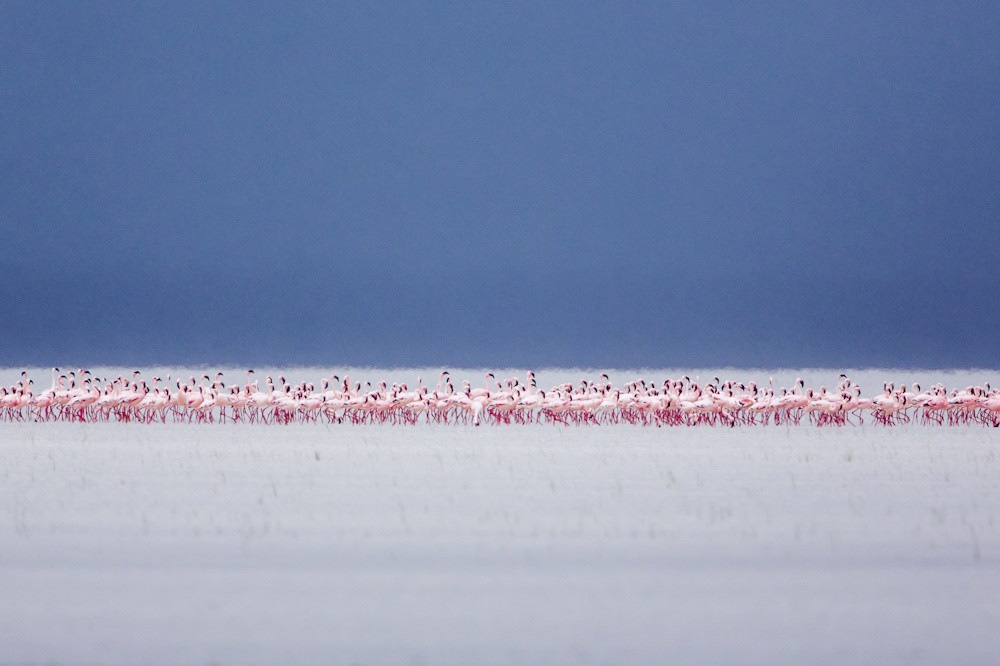
Shortlisted "Group display on the pan." by Johan Lind. For flamingos, courtship in large flocks results in higher reproductive success per individual compared to courtship in smaller flocks. Adding more individuals result in more group displays, and when the amount of group displays increase, reproduction is augmented. Thus, to maintain stable populations, groups must be large enough to produce sufficient amounts of stimulation. This knowledge is used for captive populations. Outside the breeding season, flamingos can be kept in small groups. But, prior to the breeding season, the small groups are reunited, with resulting increased levels of group displays that improves reproductive success. In this desolate place, not much stimulation arise outside of this group, in the important and protected breeding habitat of the Fischer’s Pan in Etosha National Park, Namibia. Canon EOS 5D III, Canon EF 500mm f/4L IS USM with Canon Extender EF 2X II. 1/2500 s, f/8, ISO 1000.

